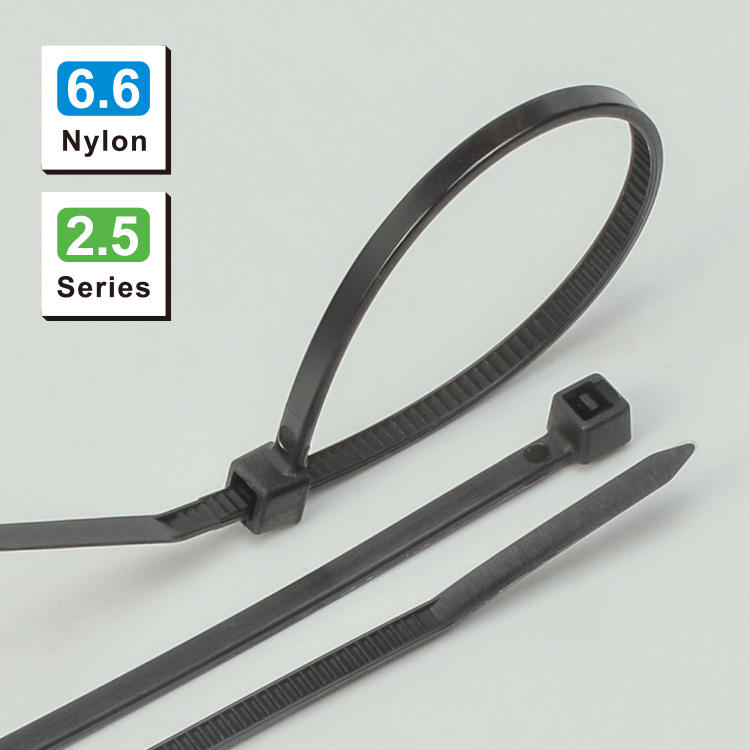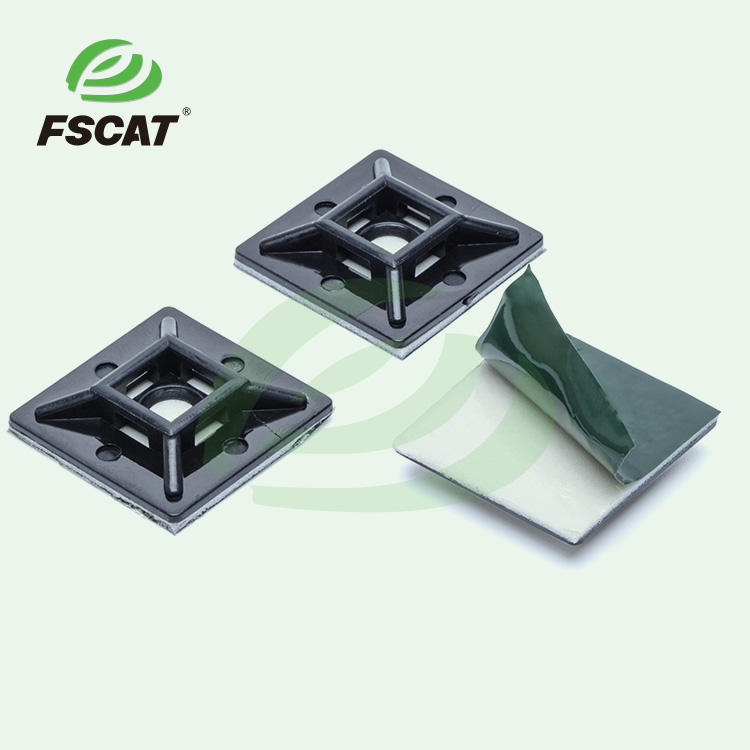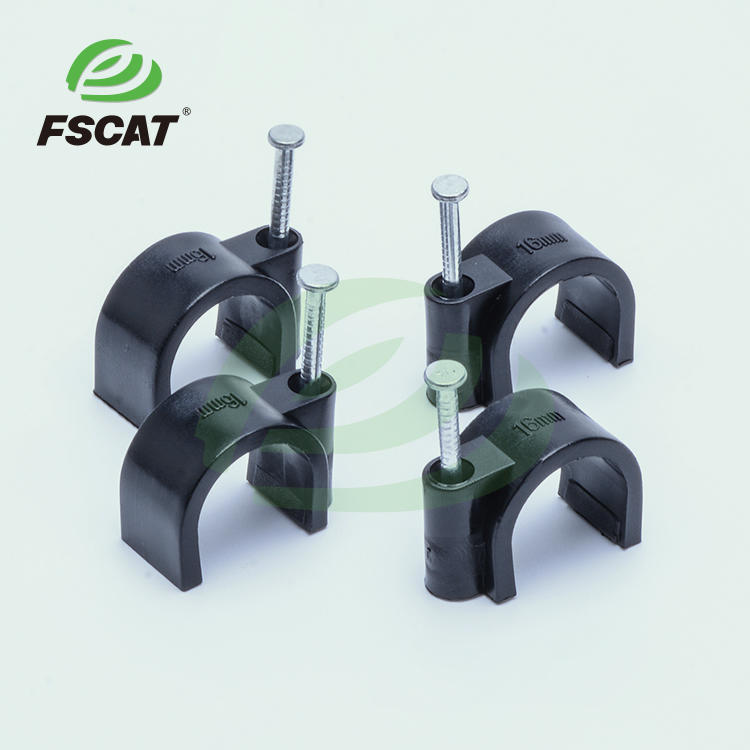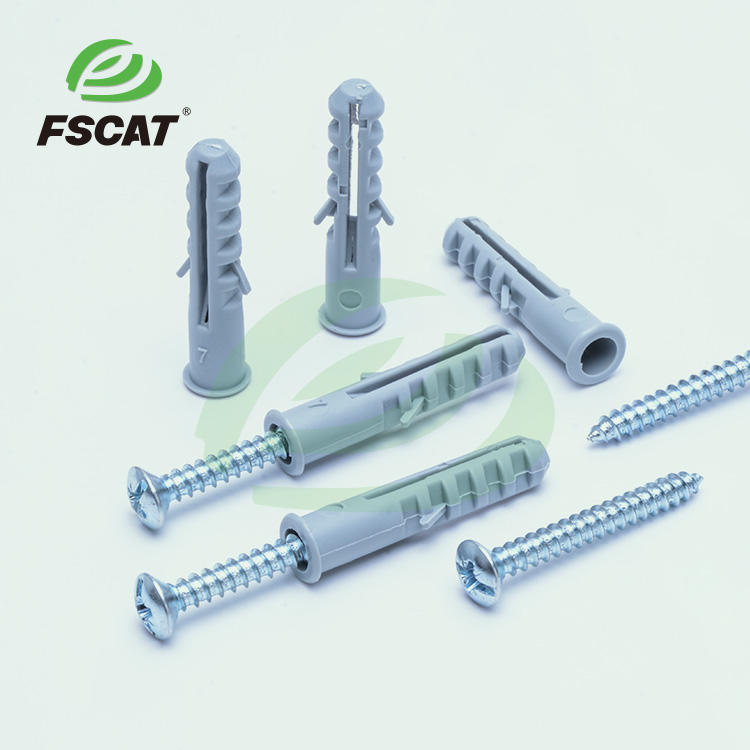What is Nylon Cable Tie used for?
Nylon cable ties, those unassuming yet incredibly useful fasteners, have woven their way into countless aspects of our daily lives and various industries. Composed of durable nylon material, these ties offer a simple and effective solution for an array of bundling, fastening, and organizing tasks.Nylon cable ties have a wide range of uses. They are used to organize cables in cable and wire management, to bundle products and reinforce packaging in the packaging industry, to fix lines and pipes in the automotive machinery field, and they are also very useful in DIY, gardening and outdoor scenes.
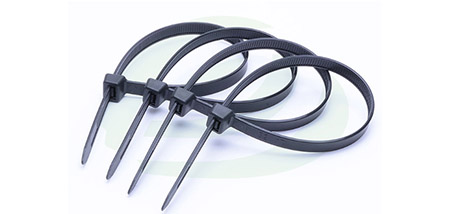
Cable and Wire Management: A Neat and Tidy Solution
One of the most prevalent applications of nylon cable ties is in cable and wire management. In today's technology - driven world, we are surrounded by a maze of electrical cords, data cables, and wires. Whether it's in a residential setting, an office environment, or a large - scale data center, the chaos of unruly cables can pose safety hazards and make maintenance a nightmare.
Nylon cable ties come to the rescue by allowing us to group and secure cables together. In homes, they are used to tidy up the cords behind televisions, computers, and entertainment centers. By bundling the power cables, HDMI cords, and audio wires, not only does the area look neater, but it also reduces the risk of tripping. In offices, cable ties are essential for keeping the numerous network cables, power cords for computers and peripherals, and telephone lines organized. This not only improves the aesthetics of the workspace but also simplifies the process of troubleshooting and adding or removing devices from the network.
Data centers, with their vast arrays of servers, switches, and storage devices, rely heavily on nylon cable ties. These ties are used to route and secure the high - density fiber optic and copper cables, ensuring that data transmission remains stable. The ability of nylon cable ties to hold cables firmly in place helps prevent accidental disconnection, which could lead to network outages and data loss.
Packaging and Bundling: Securing Goods with Ease
The packaging industry has found nylon cable ties to be invaluable for bundling and securing products. In manufacturing, small parts such as screws, nuts, bolts, and electronic components are often packaged in bags or small containers. Nylon cable ties are used to close these packages securely, preventing the contents from spilling out during transportation or storage.
In the food and beverage industry, cable ties play a role in packaging as well. They can be used to tie the openings of plastic bags containing items like nuts, dried fruits, or small snacks. This not only keeps the product fresh by preventing air exposure but also provides a convenient way to reseal the bag after opening. Additionally, in the case of larger food products such as bags of flour or rice, cable ties can be used to reinforce the closure, ensuring that the product remains intact during handling and shipping.
In the shipping and logistics sector, nylon cable ties are used to secure packages of all sizes. They can be used to fasten cardboard boxes closed, especially in cases where traditional tape may not be sufficient. For example, when shipping heavy or oddly - shaped items, cable ties can provide an extra layer of security. They are also used to bundle multiple packages together, making it easier to handle and transport them.
Automotive and Machinery: Ensuring Reliable Performance
In the automotive industry, nylon cable ties are integral to the assembly and maintenance of vehicles. They are used to secure wiring harnesses, which are bundles of electrical wires that power various components in a car, such as the engine control unit, lights, and infotainment system. By using cable ties to hold the wiring harnesses in place, manufacturers can prevent the wires from rubbing against other parts of the vehicle, which could cause insulation damage and electrical malfunctions.
Cable ties are also used to secure hoses in the engine compartment. Coolant hoses, fuel lines, and air intake hoses need to be firmly held in place to ensure proper fluid and air flow. Nylon cable ties can withstand the vibrations and temperature changes that occur in an engine environment, providing a reliable fastening solution.
In the machinery industry, whether it's industrial equipment, agricultural machinery, or construction machinery, nylon cable ties are used to keep cables, hoses, and other components organized and secure. They help in preventing parts from moving around during operation, which could lead to wear and tear or even equipment failure. For example, in a manufacturing plant, cable ties are used to secure the cables and hoses on conveyor belts, ensuring smooth and uninterrupted operation.
DIY and Crafts: Unleashing Creativity
Nylon cable ties have become a favorite among DIY enthusiasts and crafters due to their versatility. In DIY projects around the home, they can be used for a wide range of tasks. For instance, when building a bookshelf or a piece of furniture, cable ties can be used to temporarily hold pieces together during assembly. They can also be used to attach hardware, such as hinges or handles, in a pinch.
In the world of crafts, nylon cable ties offer endless possibilities. They can be used to create unique jewelry pieces. By bending and shaping the cable ties and adding beads or other decorative elements, crafters can make necklaces, bracelets, and earrings. In model building, cable ties can be used to fasten components together, especially in situations where traditional glue may not be suitable or when a more flexible connection is needed. They are also useful for securing fabric or materials in arts and crafts projects, such as tying together the ends of a macrame project or holding a canvas in place on a frame.
Outdoor and Gardening: Taming the Elements
Outdoor applications also benefit greatly from the use of nylon cable ties. In gardening, they are used to support plants as they grow. By tying plants to stakes or trellises, gardeners can help the plants grow upright and prevent them from being damaged by wind, rain, or heavy fruit loads. For example, tomato plants can be secured to stakes using cable ties, allowing them to grow vertically and making it easier to harvest the fruit.
Cable ties are also useful for bundling branches and vines in the garden. This helps to keep the garden area neat and organized, as well as preventing over - growth and tangling. In addition, they can be used to secure ropes, wires, or hoses in outdoor settings. For example, when setting up a clothesline, cable ties can be used to fasten the rope to the poles. They can also be used to hold down tarps or covers in windy conditions.
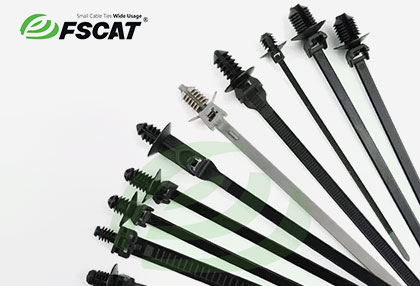
In conclusion, nylon cable ties are a simple yet highly effective fastening tool with a wide range of applications. Their durability, affordability, and ease of use make them a staple in various industries and in our daily lives. From organizing cables to securing packages, from automotive assembly to creative DIY projects, and from gardening to outdoor maintenance, nylon cable ties continue to prove their worth time and time again.


